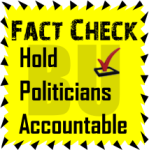Submitted by Yardbroom
We know of Bussa as a Barbados “hero” an accolade bestowed on only a select few of our sons/daughters. A statue to represent him in all its nakedness and strength, has been erected on the busy Haggatt Hall highway in Barbados, to remind us of our past.
What do we know of Bussa? It is well documented that he was of African lineage and it is also believed he came to Barbados as an adult slave. He led a slave rebellion in 1816 at Bayleys Plantation in the parish of St Philip and was killed in the ensuing battle. He like some of those who were involved in the rebellion paid the ultimate price for the insurrection. Bussa’s life post the slave rebellion is part of Barbados’ history but I will – with much conjecture – in this short submission retrace his steps before Barbados. A tall order because of the lack of specific information that relates directly to Bussa.
It is best to tell you where I am heading, before you are taken on this short journey. I believe he, “Bussa” came from the village of Bussa which is between Birni Yauri and Jessao on the Niger River. Before you ask. It is not simply a matter of choosing a place in Africa with the name of Bussa and supposing he came from there. So a few feasible pointers are required to support my conjecture.





















You must be logged in to post a comment.